
Founded in 1010, Hanoi was the political, historical, cultural and economic center under the dynasties of Ly, Tran and Le (1010 - 1802). The city served as the capital during French Indochina between 1887 and 1945, and then as capital of the Democratic Republic of Vietnam. It will surprise you with the beauty of its ancient houses, its buzzing alleys, and its historical monuments. Smaller than its southern big sister SaiGon, Hanoi is intense and an enchanting city where a rich history melts with a complicated modernity.
- Numerous historical sites
- A hundred colonial buildings
- Lush and shady alleyways
- The hectic Old Quarter
- Charming and cultural city
Located west of Hoan Kiem Lake, the temple, also known as the first university in Hanoi, hides behind its ramparts. The entrance is quite discreet and you will have to pass several gardens and doors to reach the temple itself. The building is extremely well preserved and is a superb example of traditional Vietnamese architecture. The temple was built for the worship of Confucius. The immaculate gardens are rich in old trees and a serene place to study and relax.
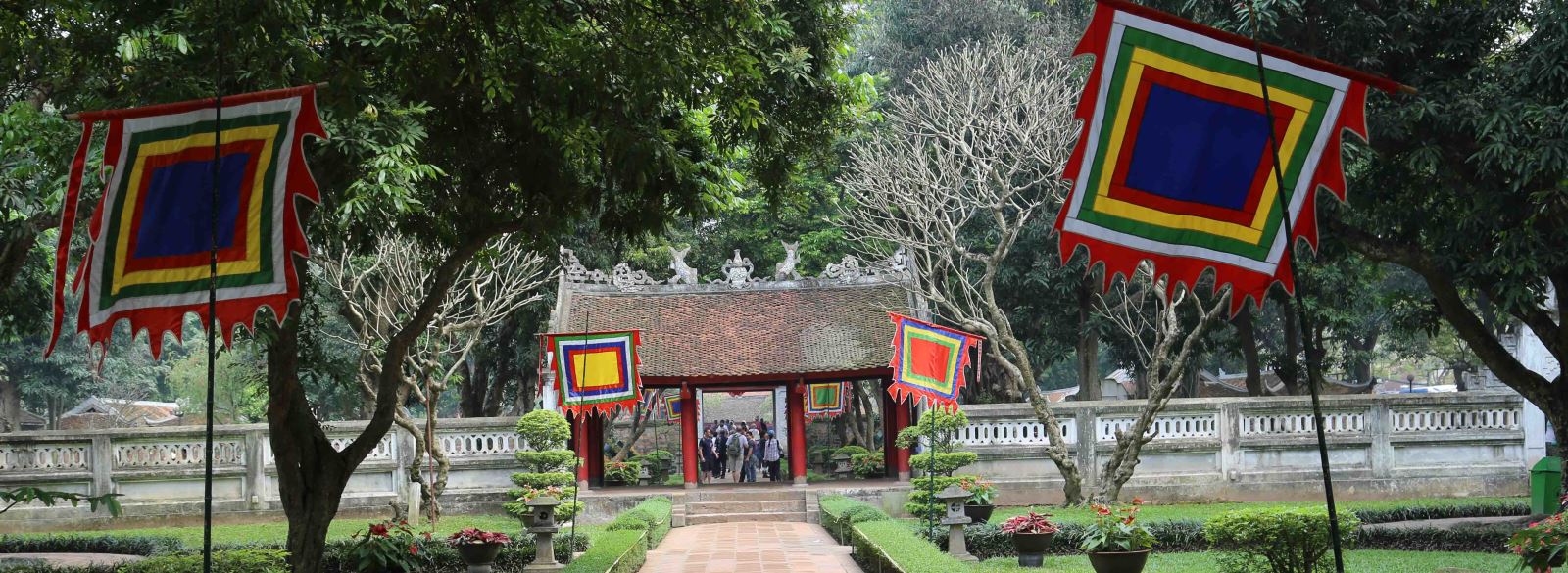
In this quarter, a rich architectural heritage remains. Many old buildings like high-class houses, communal houses and pagodas bear witness of the past. Their architecture mixes three different styles: traditional-style Vietnamese and Chinese, French-colonial architecture.
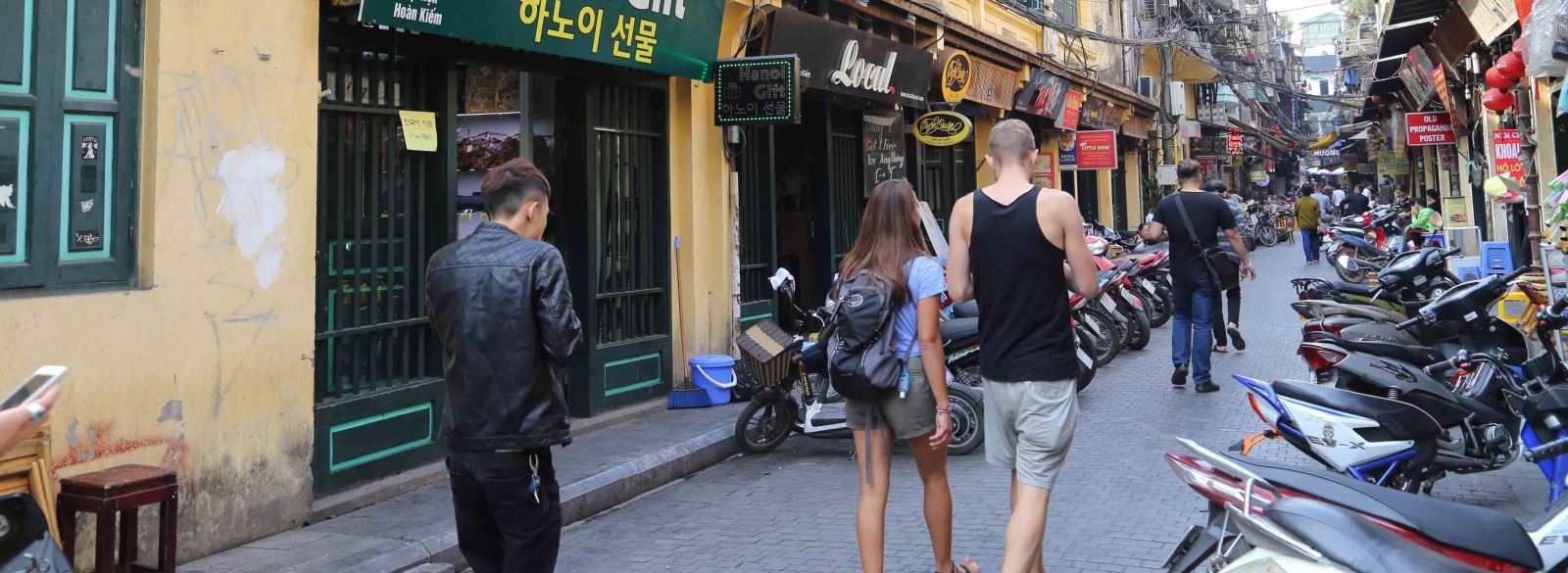
2.3. Lake of the restored sword
The tour will then head to Hoan Kiem lake, also known as the “Lake of the Restored Sword”. Legend has it that rising from these waters, a Golden Turtle appeared to the king and gave him a sword, the Thuan Thien, in order to defeat Chinese invaders. The king Lê Thaï To gave back the sword to the Golden Turtle and renamed the lake to commemorate this event.
If waking up early, travelers will be able to see Hanoians practicing Tai Chi Chuan around the lake. Not far from there, Ngoc Son Temple bears witness of Tran Hung Dao victory, a former Vietnamese general, over the Chinese army. To get there, you will have to cross a magnificent red bridge. It has many names but its real one is The Huc bridge, which means “The bridge of the rising sun”.
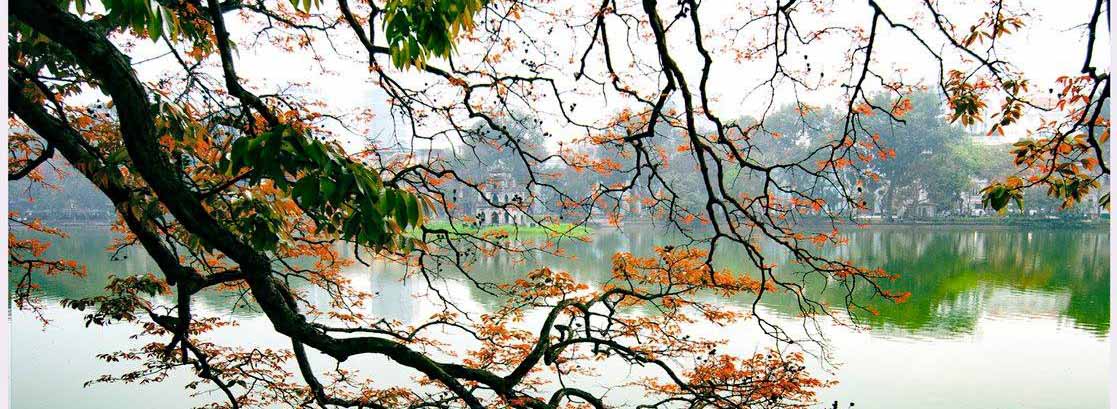
2.4. Water puppet theatre
Water puppetry is originated in villages of the Red River Delta, where there is an abundance of ponds and pools. These shows still enchant young and old alike. The wooden figures slide on the water, dive or jump, driven by an ingenious system of poles, ropes and pulleys, brought to life by soaked puppeteers hidden behind a curtain. An orchestra of tam-tam, flutes, hurdy-gurdies and castanets accompanies the puppets movements with folk songs as firecrackers, fireworks are set off.
Start your stroll in Dong Xuan, Hanoi’s largest indoor market. Smell the aromas coming from the stalls of street vendors, where anything can be found, from exotic fruits to seafood. With your local guide, listen to stories about Hanoi’s culinary culture and northern specialties.
The bridge allows the North-South Vietnam Railroad coming from SaiGon to cross the Red River and to continue on its way to Yunnan, China. With a total length of 1,682m, a height of 13.5m and a depth of 30m, the Paul Doumer Bridge was the first steel bridge to span the Red River. Also known as Long Bien Bridge, it was constructed between 1899 and 1902, and designed by Gustave Eiffel, the father of the Tour Eiffel in Paris. Because of its strategic position, it was severely bombed during the American war. To Hanoians, it is a place not only helping people to cross the Red River but also preserving historical memories. To travelers, one-hour walk across will definitely make an impression.

The Museum of Ethnology features a fabulous collection relating to Vietnam’s 54 ethnic minorities. 15,000 objects gathered from across the nation are on display, 42,000 color movies, 273 audio tapes of interviews and music, 373 videos and 25 CDs (in 2000). The items are classified according to various criteria such as their ethnic origin or their function and well labeled in Vietnamese, French and English.
Located near Hoan Kiem Lake, you just can’t miss it! Imposing and dressed in grey, it sits in the center of a square. Surrounded by cafes and restaurants, it’s a gathering place for local poeple to enjoy a coffee and gossip. Quite touristy, the best time for a visit would be for breakfast on a Sunday morning. The sound of church bells will for sure awaken a lot of emotions.
The pagoda is located just behind Ho Chi Minh Mausoleum. Quite touristy, it has become a must-see monument of the city.
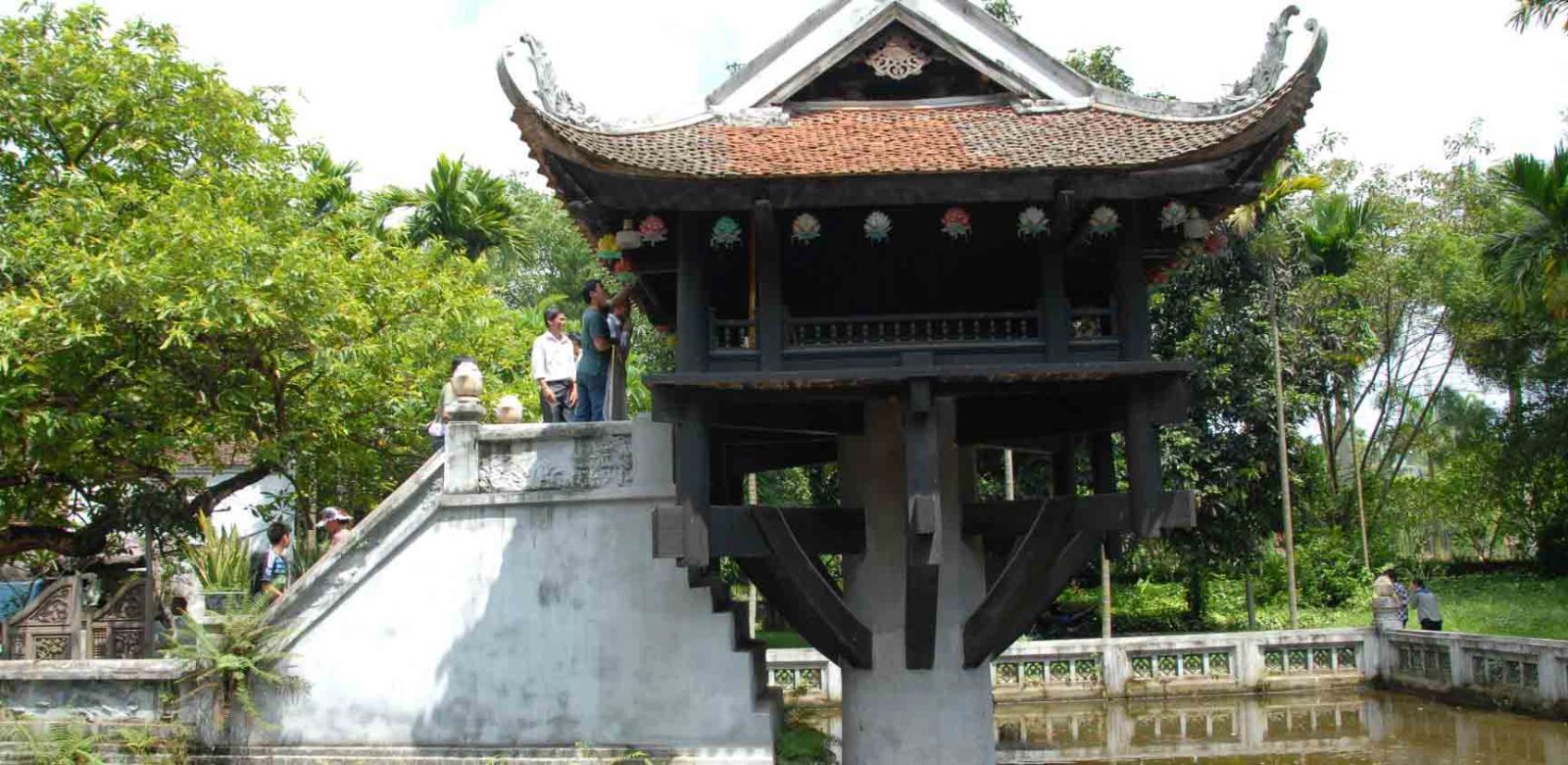
2.10. Tran Quoc Pagoda
Located north of West Lake, with its 15 meter height, you can see it from afar. One of the oldest pagodas in Vietnam, Tran Quoc Pagoda looks bright with its clean orange bricks. Although quite touristy, the atmosphere is serene in the landscaped garden. People come here to stroll, to pray or just of curiosity.
The villages surroundings Hanoi are known for perpetuating century-old craft traditions. These cultural jewels are only about 20 to 30 km from Hanoi. Do not miss it!
Located in Phuong Trung Commune, Thanh Oai District, Hanoi. Chuong Village is supposed to be the oldest conical hats manufacturing village in northern Vietnam. The market, which takes place every 4th, 10th, 14th, 20th, 24th and 30th days of the lunar month, attracts sellers and buyers but also many tourists. Not only conical hats are sold but even bamboo-stemmed circles that are the frame of the hat. You will have an opportunity to see how it's manufactured.
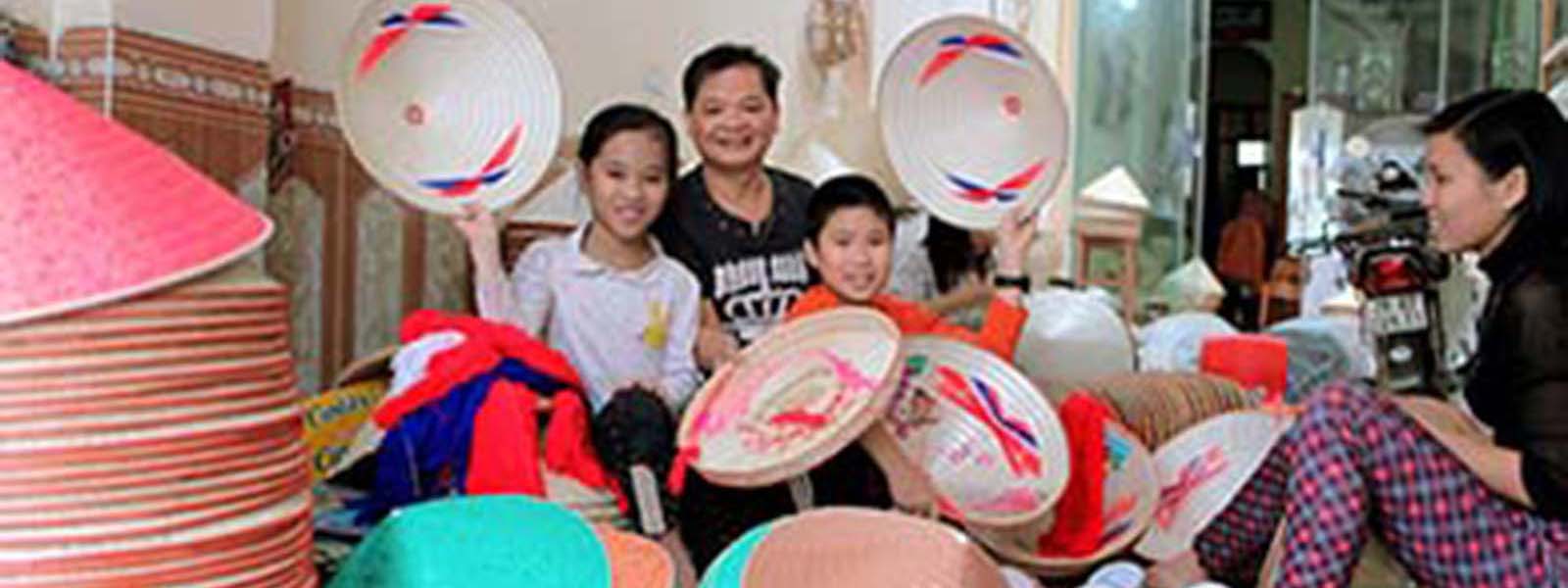
3.2. Ha Thai Lacquerware village
Ha Thai village is located in Duyen Thai township, Thuong Tin District, Ha Tay. Take the national road 1A that leaves Hanoi to the south. Ha Thai is famous for lacquerware since about 200 years. Its skillful craftsmen passed on knowledge from generation to generation. Around the world, colorful Ha Thai products are seen as a guarantee for fine craftsmanship.
Located on the banks of the Red River, about 20 km east of Hanoi, Bat Trang is a porcelain and pottery village, famous for the quality and the beauty of its ceramics. Combining both modern and traditional techniques, some of those perpetuated for more than 700 years, Bat Trang’s craftsmanship remains artisanal as the village holds an important part in the ceramics industry in Asia. You will be able to buy some of the finest products in Bat Trang and also see how they’re handmade and even be able to make your own piece and bring it back home.
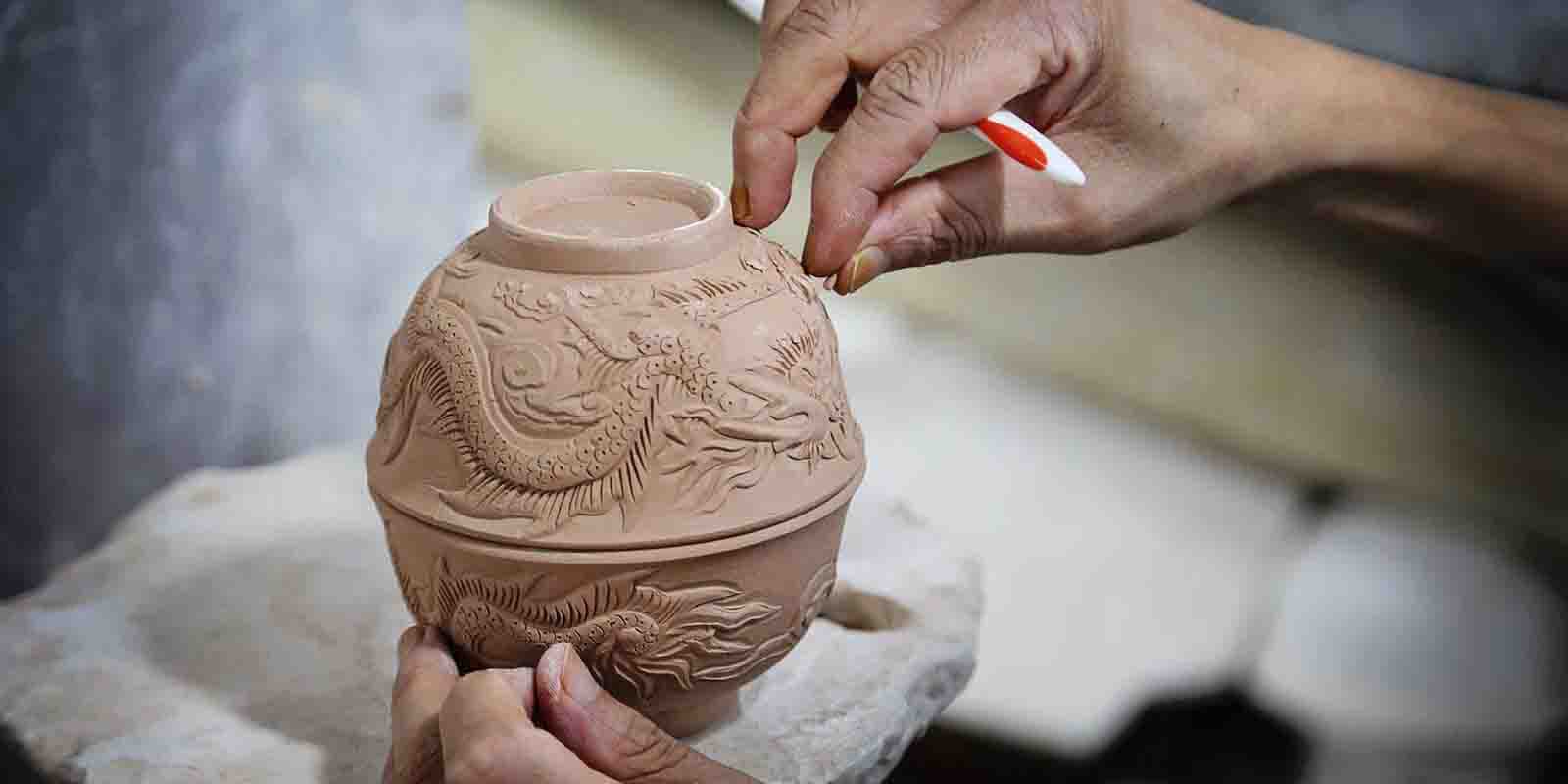
3.4. Nom village
Take a stroll in Nom village along the docks lined by family temples, some of them are ancient, and decorated with colorful facades, porches mixing traditional Vietnamese architecture and western elements such as columns, capitals and bas-reliefs, and temples dedicated to ancestor worship.
A great stopover on the way to Hanoi from Halong Bay, the Nôm Pagoda is one of the most beautiful on the suburban of the capital. Located about 35 km or 1 hour drive from Hoan Kiem Lake, it is an ideal place to meditate and get away from excitement and hustle of the city.
Located around 30km west of Hanoi, Chua Thay Pagoda, also known as Thien Phuc (Heavenly Blessing), was built during the reign of King Ly Nhan Tong as a tribute to Tu Dao Hanh, the Water Puppetry creator, who led an exemplary religious life. The pagoda is built in front of Long Tri Lake (Dragon’s Pond). In this lake stands a 17th century overwater pavilion, the oldest water puppet theater, built in 1602. Two bridges, covered with a tiled roof, Moon Bridge and Sun Deck, lead to it. It is a perfect place to have lunch or a refreshment.
From the pagoda, a path climbs leads to a mountain top and a sanctuaries dedicated to Quan Am, the goddess of mercy, and the monk Tu Dao Hanh. The place is magnificent with several small pagodas shrouded in the smoke of burning incense. They’re of remarkable architectural beauty, all in wood, all pegged, some with curved tiled roof. They’re enclosed in wilderness, as prisoners of roots and lianas. Make sure to visit the beautiful Cac Co Cave, the place where Tu Dao Danh died, with its skylight and its small altars.
This visit can be combined with Tay Phuong pagoda tour, one of the oldest pagodas in Vietnam. One comes from afar to admire its collection of statues, or with the village of Duong Lam recognized as National Art Architecture Relic Site since 2005 or with the vegetable village Song Phuong.
An immersion in the culture of ethnic minorities of Upper Tonkin
A journey related to nature, biodiversity to discover the lush nature of Vietnam
The magic of Halong Bay, Tam Coc landscape, the old-fashioned charm of the streets